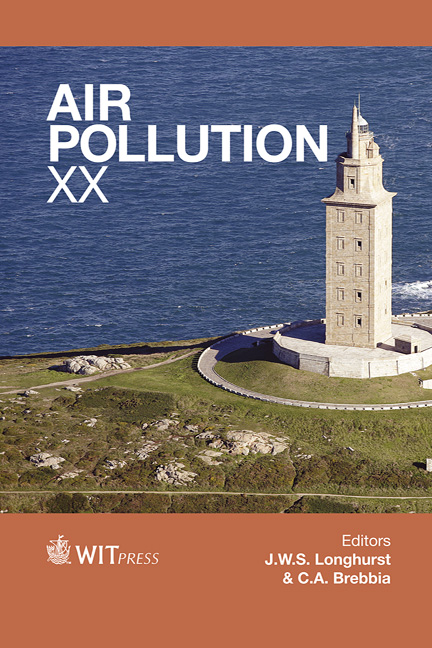Modelling Temporal Changes Of Nitrogen Dioxide Concentrations In An Urban Area
Price
Free (open access)
Transaction
Volume
157
Pages
9
Page Range
71 - 79
Published
2012
Size
354 kb
Paper DOI
10.2495/AIR120071
Copyright
WIT Press
Author(s)
C. Capilla
Abstract
Meteorological variability must be taken into account in the modelling of temporal changes in air pollutants to evaluate emissions reduction strategies. In this paper nitrogen dioxide (NO2) hourly data are analyzed at two monitoring stations in Valencia (Spain). Meteorologically-adjusted nitric oxide (NO) is used as an indicator of traffic density. The low-pass filter developed by Kolmogorov and Zurbenko is used to split the logarithm of NO2 and NO hourly concentrations into long-term, seasonal and short-term components. Meteorological effects are analyzed and removed from filtered pollutants time series. Forward stepwise regression is employed to select the filtered meteorological variables that explain more variability. A natural logarithmic transformation is applied to the series of hourly data and the model for the hourly pollutants concentrations is multiplicative. The dependencies of urban NO2 on the corresponding vehicular emissions and relevant meteorological parameters are non-linear. Long-term components represent a small amount in the overall variability of air pollution data. Seasonal and short-term components mask the underlying relationship between NO2 and emissions if studied as a whole. The pollutant temporal components have to be studied separately due to their different physical and explanatory mechanisms. Keywords: air pollution, Kolmogorov-Zurbenko filter, nitrogen dioxide, temporal changes, urban air quality. 1 Introduction Air pollution in urban areas is regarded as a growing problem for communities. Some compounds like ozone, nitrogen oxides, sulphur dioxide and atmospheric
Keywords
air pollution, Kolmogorov-Zurbenko filter, nitrogen dioxide,temporal changes, urban air quality.





